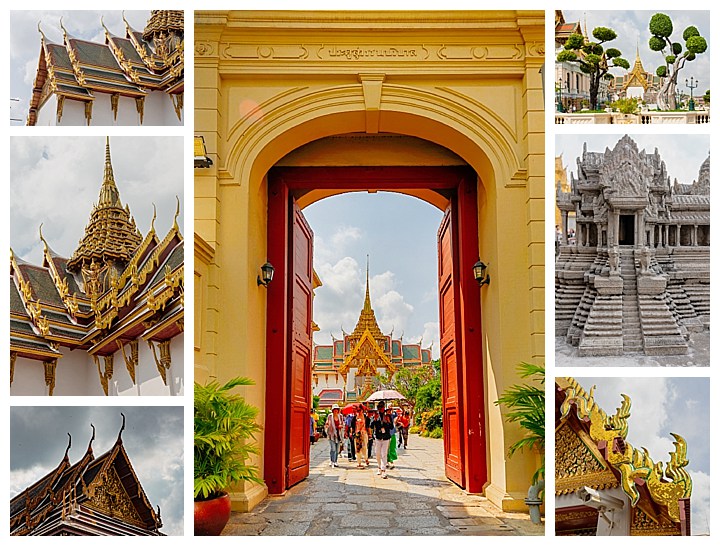
We are starting our 2019 travels in Bangkok, Thailand. This is our third time in Thailand, though our last visit was some 15 years ago, and we remember so little of the details that everything seems refreshingly new to us. That was a major reason we started this blog — we found ourselves usually forgetting details after a few years. Now, we have this permanent record to refer back to, and relive the excitement of each location.
We rode to the Grand Palace in a complimentary hotel tuk tuk this morning. The Grand Palace is always crowded, even immediately upon opening, and it is always difficult to take a photograph without having a tourist in the image. The last few years, we’ve seen more large Chinese tour groups. With Thailand neighboring China, the percentage of tourists from China is even higher than elsewhere in our travels.
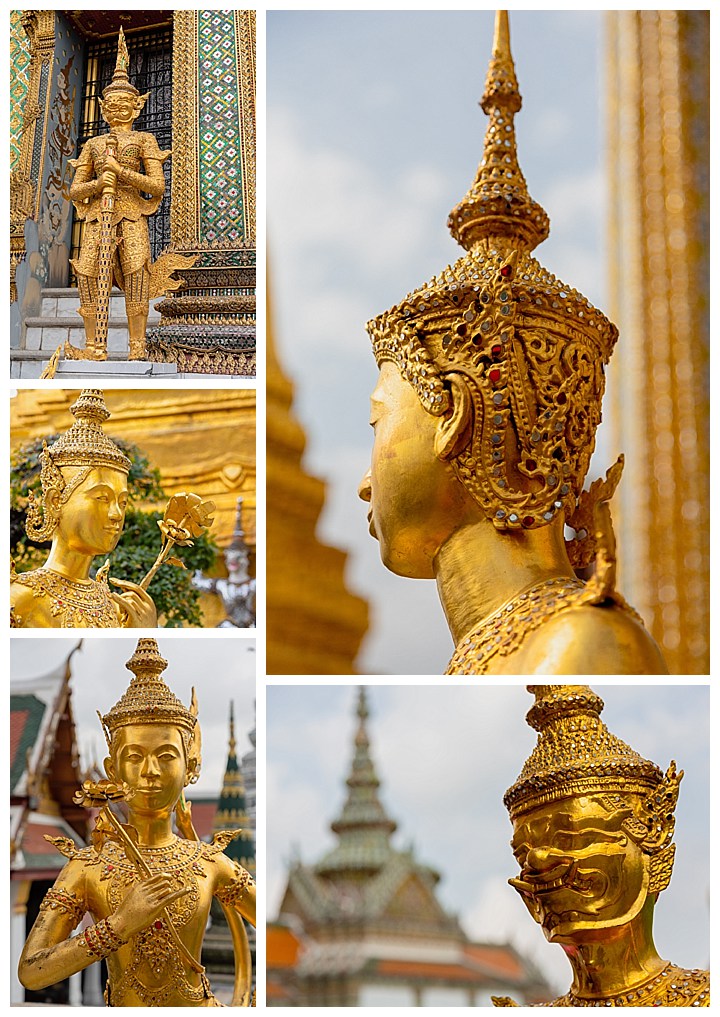
The Grand Palace has been the official residence of the King of Siam (and later Thailand) since 1782. The King and all government offices were relocated outside the Palace in 1932, after the abolition of absolute monarchy.
Gold statues are located throughout the Palace grounds, usually depicting mythical characters of Buddhist and Hindu religious significance.
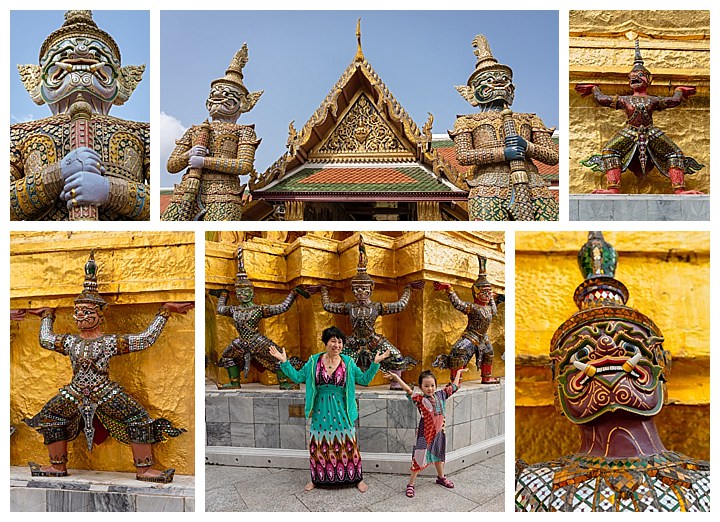
Many of the guardians are jewel encrusted, or painted with ornate detailed designs. Some of them are used as backdrops for an almost continuous flow of selfies (bottom-center).
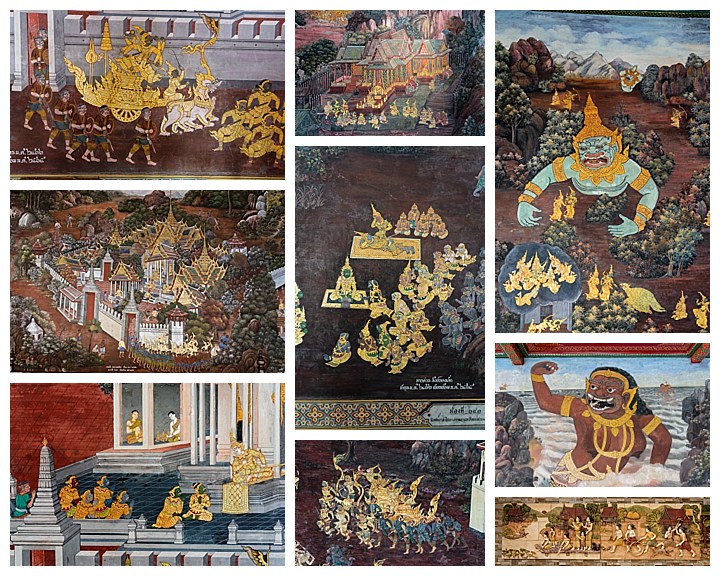
Around one of the inner courtyards is what is claimed to be the longest “story mural” in the world.
Mural paintings depict the story of the Ramakien, the Thai version of the Indian Ramayana epic. This story is the battle between Tosakanth who is the King of demons and King Rama (human being). The story tell about Tosakanth kidnaps the Queen of King Rama whose name is Sida, and takes her to Longka city, where he hopes that she will fall in love with him but she doesn’t. In the battle that follows, Tosakanth asks his innumerable relatives and friends to join him, whereas King Rama has a monkey army and the great monkey warriors under his command. Finally, Tosakanth is defeated and King Rama takes Sida back to Ayodhaya, his capital city. The painting consists of 178 sections. [Quote from the official Grand Palace website]
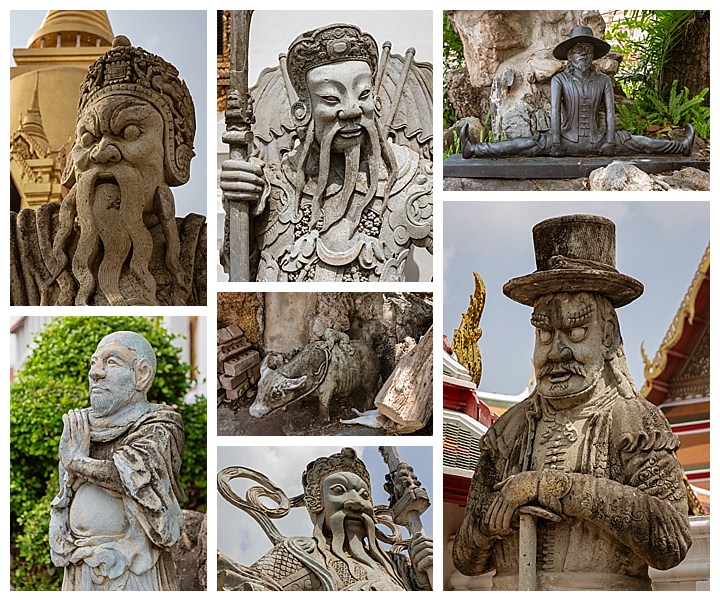
Ships traveled to China in the 18th and 19th centuries, carrying Thai goods for sale. Rather than return empty, the ships would carry Chinese statues to be used as ballast, stabilizing the ships for the return journey. Many of those statues ended up in the Grand Palace, yielding a rather bizarre counterpoint to the predominant Thai architecture.
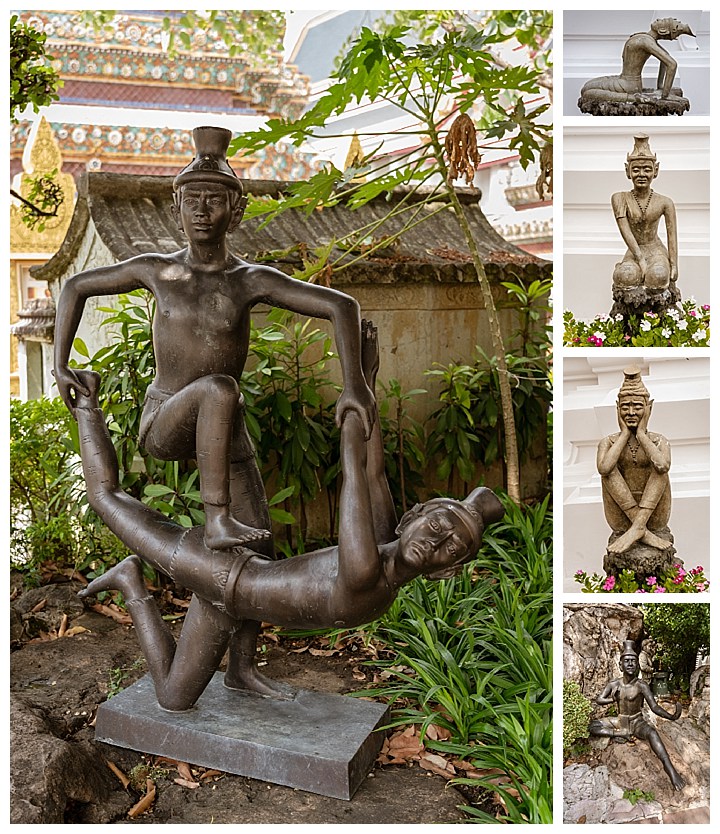
There is also a series of statues depicting Thai people in yoga postures.
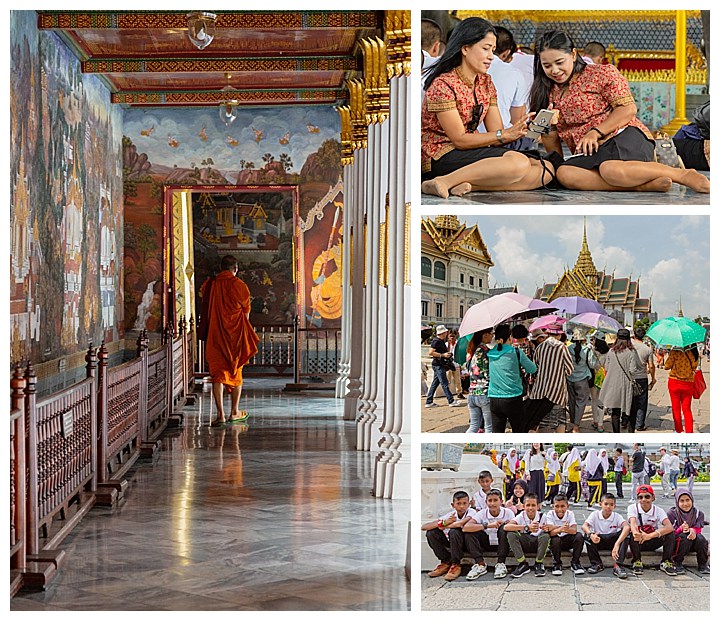
As mentioned, people were everywhere around the Palace. The monk (left) was one of the few we saw who works here. The rest (right column) were swarms of tourists.
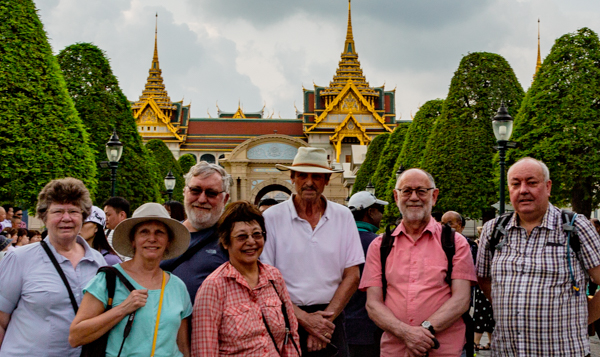
Speaking of tourists, here are members of our tour group, showing the five people we are traveling with (Mary, Nikki, Burt, Evelyn, Roger, Paul and Steve).